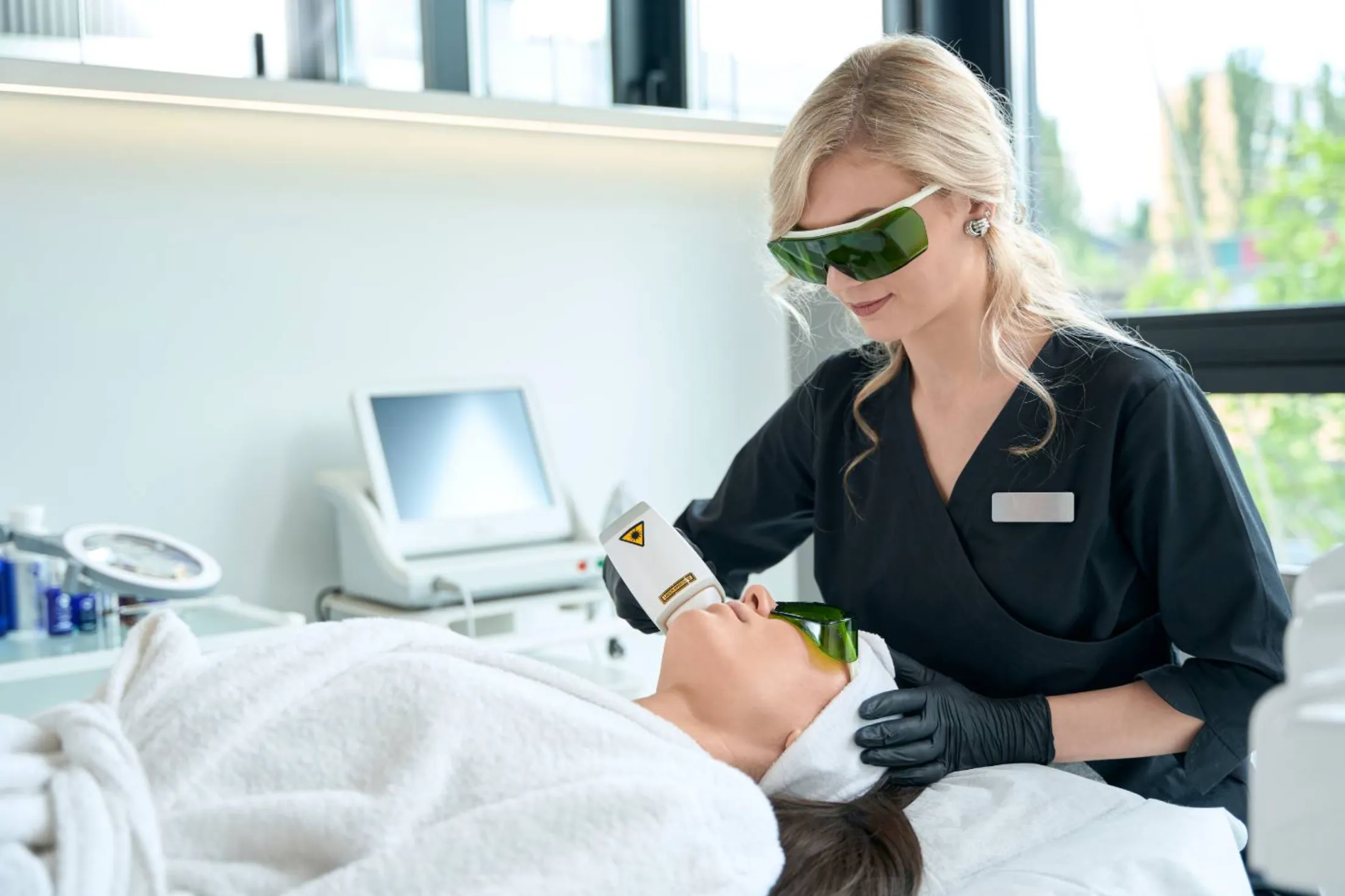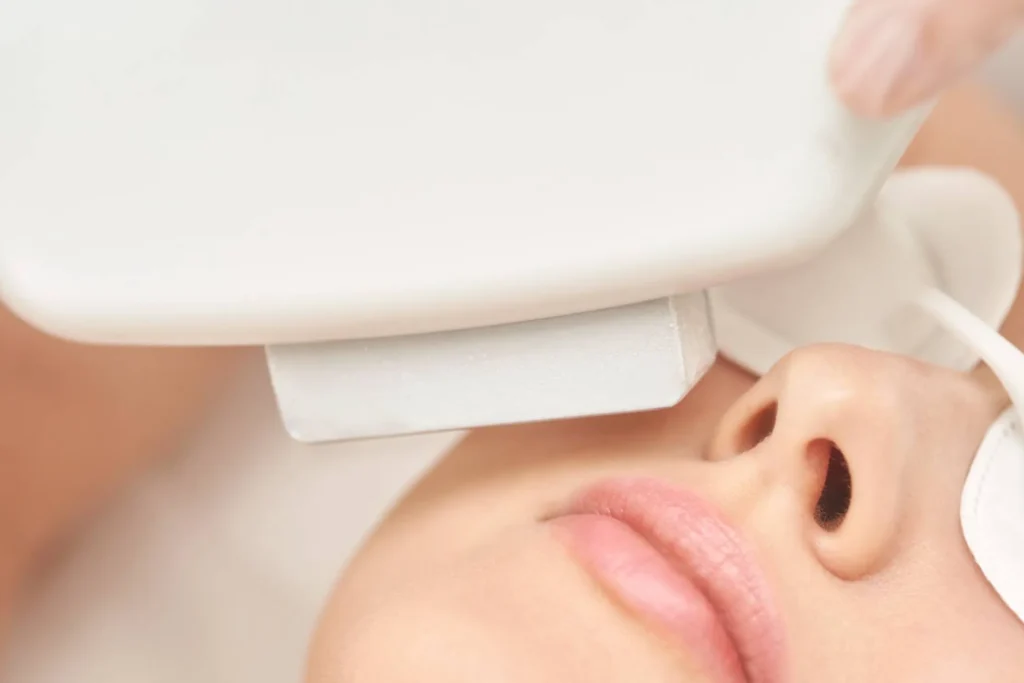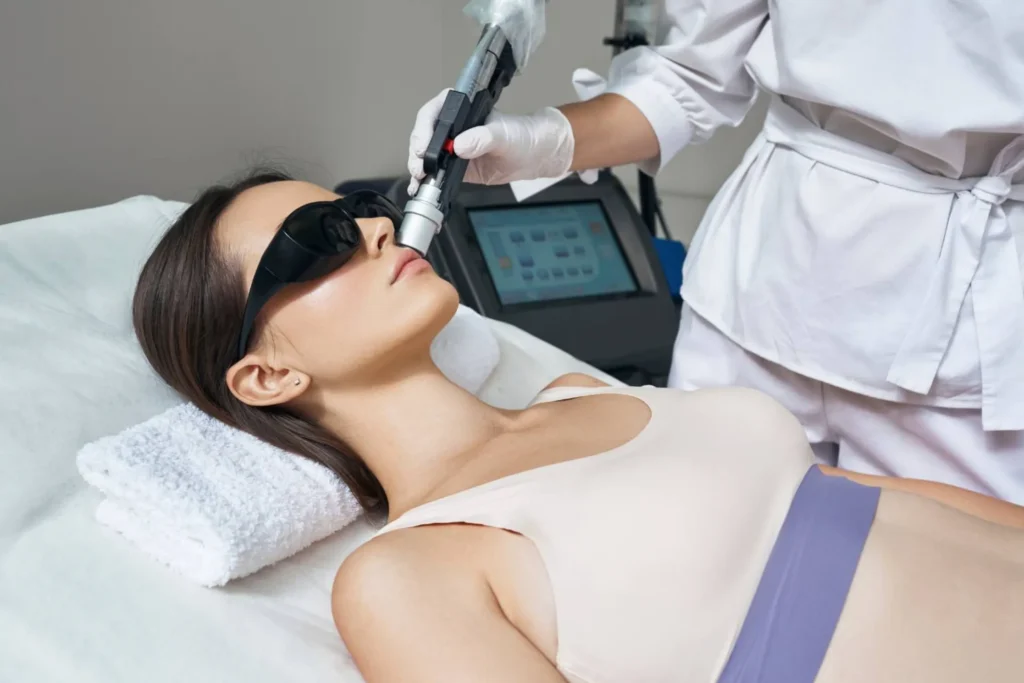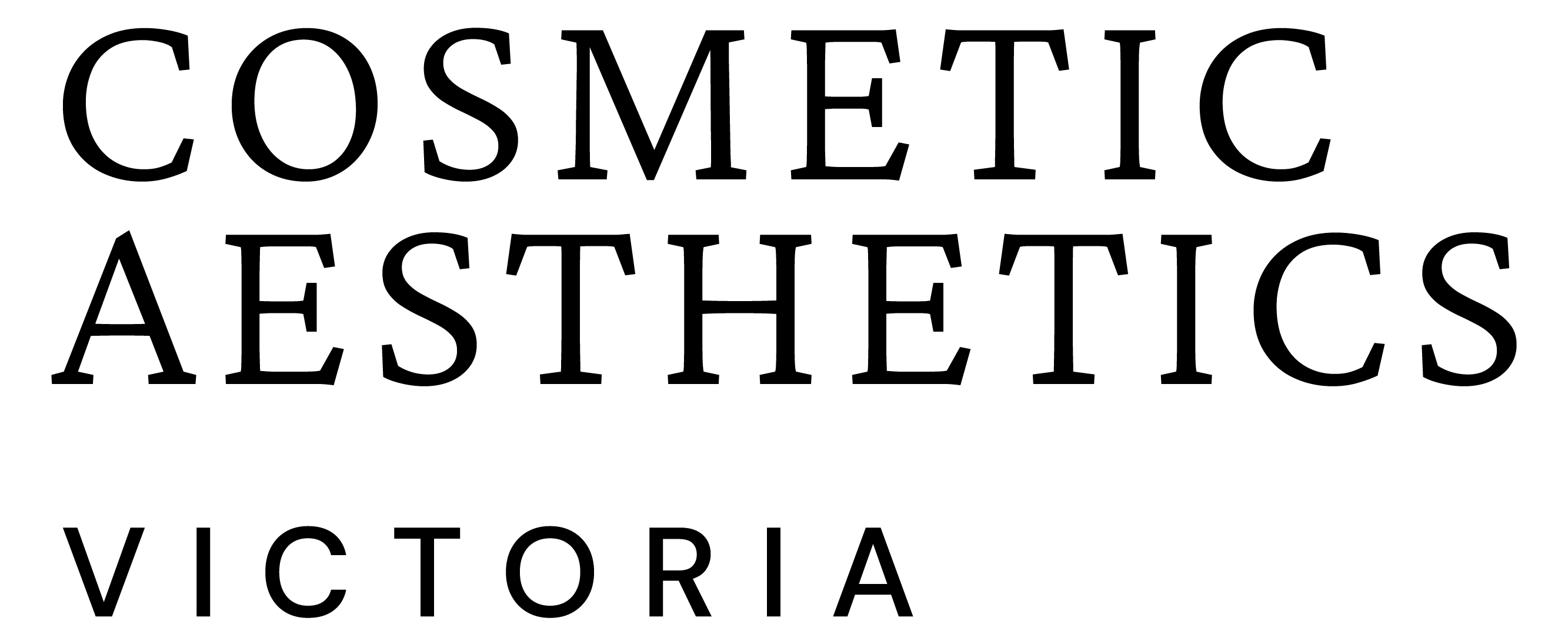
What To Know Before Getting Laser Hair Removal On Your Face?
If you’ve ever found yourself frustrated with the constant upkeep of waxing, shaving, or plucking facial hair, you’re not alone. I’ve been there too, spending more time than I’d like to admit on those regular grooming routines. That’s when I decided to try laser hair removal on my face. The results were life-changing, and I haven’t looked back since. But, like any cosmetic treatment, it’s important to know what you’re getting into before diving in.
From preparation to aftercare, this guide will walk you through everything you need to consider before booking your first session, because achieving smooth, hair-free skin is about more than just the treatment itself; it’s about the whole experience. Let’s dive in!
Is Laser Hair Removal On The Face Right For You?
Laser hair removal (LHR) on the face is a game-changer for anyone tired of the constant upkeep of shaving or waxing. As someone who has been through the treatment myself, I can tell you it’s not just about removing unwanted hair; it’s about reclaiming your time and confidence. But before you jump into it, there are a few things to consider to determine if LHR is the right fit for you.
The first thing that comes to mind is whether or not you’re a good candidate. Over the years, I’ve had many clients ask, “Will laser hair removal work for me?” The answer isn’t always the same for everyone, and it depends on several factors like skin type, hair colour, and even health conditions. For example, if you have fair skin and dark, coarse hair, you’re in the ideal zone for LHR. This combination provides the stark contrast that the laser needs to target the hair effectively.
Who Are Suitable Candidates For Facial Laser Hair Removal?
Facial laser hair removal isn’t one-size-fits-all. As much as I was excited about the possibility of smoother skin without the hassle of waxing, it was crucial to understand whether I was the right candidate for the procedure. Thankfully, after a consultation with my clinic, I realised that many people, like myself, are ideal candidates, but there are a few factors to consider first.
1. Skin And Hair Type: The Key Factors For Success
One of the first things my practitioner assessed was my skin and hair type. This is essential because laser hair removal works best when there is a contrast between your skin tone and hair colour. Here’s why:
| Skin Tone | Hair Color | Effectiveness | Recommended Technology | Notes & Tips |
| Fair to Medium | Dark (Brown/ Black) |
Excellent | Alexandrite or Diode Laser | High contrast between skin and hair allows precise targeting. Best candidates. |
| Fair to Medium | Blonde, Red, or Grey | Low to Moderate | Advanced Diode Laser or Electrolysis | Laser struggles to detect pigment; consult specialists or consider electrolysis. |
| Dark | Dark (Brown/ Black) |
Good | Nd: YAG Laser | Nd: YAG penetrates deeper, making it safe and effective for darker skin tones. |
| Dark | Light (Blonde, Red, Grey) | Very Low | Electrolysis | High risk of hyperpigmentation or ineffective results with laser; electrolysis is safer. |
2. Health And Skin Conditions: What You Need To Know
While most people can undergo facial laser hair removal, there are a few health and skin conditions that could make the procedure less suitable:
- Active Skin Conditions: If you have conditions like eczema, rosacea, or acne, it’s best to consult with your doctor or dermatologist before proceeding. Laser treatments can aggravate these conditions, leading to irritation or more breakouts. I had a friend with sensitive skin, and she found that her rosacea flared up a bit after the treatment, so it’s something to keep in mind. A dermatologist’s evaluation can help you decide if laser hair removal is the right option for you.
- Contraindications to Treatment: Some other factors to be aware of include:
- Recent Sun Exposure: You must avoid sun exposure or tanning for a few weeks prior to treatment. Tanned skin absorbs more of the laser energy, which could cause burns, pigmentation issues, or reduced efficacy. I learned this the hard way when I tried to go tanning before my consultation—my technician immediately advised against it, which saved me from potential complications.
- Pregnancy and Breastfeeding: While there are no conclusive studies on the safety of laser hair removal during pregnancy, most clinics will advise avoiding the procedure during pregnancy or breastfeeding due to hormonal fluctuations. This is something I appreciated learning, as it helps avoid any unexpected surprises during the procedure.
- Recent Sun Exposure: You must avoid sun exposure or tanning for a few weeks prior to treatment. Tanned skin absorbs more of the laser energy, which could cause burns, pigmentation issues, or reduced efficacy. I learned this the hard way when I tried to go tanning before my consultation—my technician immediately advised against it, which saved me from potential complications.
3. Hormonal Imbalances And Special Conditions
One of the things that struck me during my consultation was the impact of hormonal fluctuations on facial hair growth. People with conditions like PCOS (Polycystic Ovary Syndrome) may experience more stubborn facial hair, which may require more sessions or maintenance after the initial treatments. For women with hormone-related facial hair issues, it’s good to have an open conversation with your practitioner about how the treatment might affect you.
4. The Final Verdict: Who Should Get Facial Laser Hair Removal?
In the end, most people are suitable candidates for facial laser hair removal, but individual factors like skin type, hair colour, health status, and hormonal factors will determine how effective the procedure is for you. It’s important to speak with a qualified professional who can assess your personal situation and set realistic expectations.
For me, after understanding my own skin and hair type and learning more about the technology available, I felt confident moving forward. I’ve since enjoyed smooth, hair-free skin without the hassle of constant shaving or painful waxing sessions.

Preparation Before Treatment
Consultation & Patch Test:
Before you book that laser appointment, ensure you’ve got a solid consultation lined up. I can’t stress this enough. I’ve had clients walk in without consulting the technician first, only to realise later that their skin wasn’t ideal for the treatment. A patch test is non-negotiable—it’s essential to see how your skin reacts to the laser. For example, some people might experience mild redness or sensitivity after a patch test, which can inform the technician of any adjustments needed in treatment intensity.
Real-World Tip:I remember Emily, who came in for a patch test for her chin. After a few minutes, she noticed a slight tingling sensation, which led the technician to adjust the laser’s power before proceeding with the full treatment. This minor tweak made all the difference in her experience.
Avoid Sun Exposure And Tanning
Now, let’s talk about sun exposure, especially for us Aussies. The Australian sun can be brutal, and being out in it too much before treatment is a big no-no. Not only does it increase the chances of pigmentation issues, but it also makes your skin more sensitive to the laser, which can lead to burns. I always recommend my clients wear SPF 30+ (or higher) every day, especially leading up to their treatment.
If you’ve recently had a tan, I advise waiting at least 2 weeks before undergoing the procedure. This ensures that the skin is back to its normal tone, reducing the risk of complications.
Hair Removal Methods To Avoid
In the lead-up to your laser hair removal session, one of the most common mistakes I see is using waxing or tweezing. These methods pull the hair out by the root, which is precisely what the laser targets. If you’ve waxed or plucked, you’re essentially giving the laser nothing to work with. It’s best to shave the treatment area a day before your appointment, as this leaves the hair follicle intact for the laser to target. Trust me, this small step makes a significant difference in the treatment’s effectiveness.
Medications And Skincare Preparations
Be mindful of any medications or skincare products you’re using. Certain medications can make your skin more sensitive to light, leading to an increased risk of burns. Suppose you’re using retinoids or strong exfoliants like glycolic acid. In that case, it’s advisable to stop using them for about a week before your session, as they can make your skin more vulnerable.
On The Day Of Treatment:
On the big day, come with clean, makeup-free skin. Any lotions, oils, or perfumes can interfere with the laser’s effectiveness, so keep things simple. Also, wear loose, comfortable clothing, as some areas may need to be treated close to the neckline or jawline.
The Laser Hair Removal Process: What Happens During The Treatment?
Once you’ve done your homework, had your consultation, and prepared your skin, it’s finally time to experience the laser hair removal treatment. As someone who’s been through the procedure, I can share that the process itself is relatively quick and straightforward, but it’s important to know exactly what to expect to make the most of it.
Understanding The Procedure And How It Works
Laser hair removal works by using concentrated light to target the pigment in your hair. The laser’s light energy is absorbed by the melanin (the pigment) in your hair, converting it into heat that damages the hair follicle. This process inhibits future hair growth. Sounds like sci-fi, right? But in practice, it’s incredibly effective and safe when done by a trained professional.
For your face, the treatment area is usually small and precise. The practitioner will adjust the settings depending on your hair and skin type to ensure the treatment is both effective and safe.
The most important thing here is to ensure the laser is set to the correct intensity for your skin and hair type. If you feel discomfort, you can always ask the practitioner to adjust the settings to suit your comfort level.
Safety Precautions During The Treatment
Your safety is a top priority during the procedure, which is why only qualified professionals should be carrying out the treatment. I’ve had clients come to me after having laser treatments elsewhere, and they’ve been worried about the equipment used. It’s essential that you go to a clinic that uses FDA-approved lasers with the proper safety features.
Protective Eyewear:
The laser used in facial hair removal is powerful, so it’s crucial that both you and the practitioner wear protective eyewear to shield your eyes from potential harm. The bright light from the laser can be intense, so make sure that this safety step is followed meticulously. It’s one of the reasons I make sure every client of mine is comfortable with their protective gear before we proceed.
What Results Can You Expect From Facial Laser Hair Removal?
After the treatment, you’re probably eager to see results, and rightfully so. But just as with any cosmetic procedure, it’s important to understand that the results from laser hair removal are not instant. Here’s what you can expect.
The Benefits Of Laser Hair Removal On Your Face
Laser hair removal is known for its ability to provide long-term hair reduction. Unlike shaving, which only removes hair temporarily, or waxing, which can leave you with regrowth in a matter of weeks, laser hair removal offers a more permanent solution.
Real-World Experience:
For me, one of the best aspects of facial LHR is how it simplifies life. Take Kate, for example, who had been waxing her upper lip every two weeks for years. After a few sessions of LHR, she noticed that the regrowth was slower, finer, and less noticeable. For her, the most rewarding part was waking up without worrying about facial hair.
In terms of benefits, the most obvious one is convenience. You no longer need to spend time and money on waxing or threading. Additionally, because the laser only targets the hair follicle, your skin will remain smooth without the irritation or risk of ingrown hairs often associated with traditional hair removal methods.
How Many Sessions Are Needed For Optimal Results?
One of the most common questions I get from clients is: “How many sessions do I need?”. The answer depends on various factors, such as your skin and hair type and the area being treated. Generally, you’ll need around 6 to 8 sessions for optimal results.
Hair grows in cycles, and laser hair removal is only effective during the active (anagen) phase of the hair cycle. That’s why treatments are spaced out, usually 4 to 6 weeks apart, allowing time for hair to re-enter the right phase.
Facial Hair Regrowth After Laser Treatment: What To Expect?
So, will the hair grow back after laser treatment? In most cases, yes, but it will grow back thinner, lighter, and less dense. The treatment reduces the hair growth permanently, but it’s not a complete guarantee that no hair will ever grow back. The good news is that if regrowth does occur, it will be much more manageable.
After my own treatment, I noticed my regrowth was much finer, and I didn’t need to schedule a touch-up session for months. It’s also worth noting that maintenance sessions once a year or so are usually sufficient for most people.

Potential Side Effects And Risks Of Facial Laser Hair Removal
While facial laser hair removal is generally considered safe and effective, it’s important to be aware of the potential side effects and risks. No procedure is without its downsides, and it’s crucial to understand what to expect—both the good and the bad—before jumping in.
During my own experience, I encountered a few mild side effects, but nothing that deterred me from continuing treatment. Here’s what you should know.
| Category | Side Effect | Description | Tips & Notes |
| Common (Mild & Temporary) | Redness and Swelling (Erythema) | Sunburn-like irritation; usually resolves in a few hours to days. | Use cool compresses; avoid heat or exercise for 24 hours. |
| Skin Dryness and Flakiness | Temporary dryness as skin heals. | Use gentle, non-comedogenic moisturisers; stay hydrated. | |
| Less Common (Minor) | Pigmentation Changes | Temporary darkening (hyperpigmentation) or lightening (hypopigmentation), especially in darker skin tones. | Use sunscreen religiously; choose clinics with Nd:YAG lasers for darker skin. |
| Acne Breakouts | Heat may stimulate oil glands, leading to acne, particularly in oily skin types. | Use oil-free, non-comedogenic products post-treatment. | |
| Crusting or Scabbing | Small scabs as skin heals; avoid picking. | Let scabs fall off naturally; use mild skincare. | |
| Rare (Serious Risks) | Burns and Blisters | Caused by incorrect laser settings or poor technique. | Choose a trained, experienced practitioner; Nd:YAG lasers reduce risk for darker skin. |
| Scarring | It may result from burns, infection, or scratching. | Follow aftercare strictly; avoid sun exposure. | |
| Infection | Due to bacteria entering the skin post-treatment. | Keep the area clean; avoid touching; apply antibiotic cream if needed. | |
| Eye Injury | From exposure to laser light, especially near the brows/eyes. | Always wear protective eyewear; make sure your practitioner does too. |
How To Care For Your Skin After Facial Laser Hair Removal?
After your laser hair removal treatment, proper aftercare is essential to ensure the best possible results and minimise the risk of side effects. Here’s everything you need to know about taking care of your skin post-treatment.
Post-Treatment Aftercare Tips
Immediately after your session, your skin may feel a little sensitive, but don’t panic—this is completely normal. The good news is that the aftercare process is relatively simple and won’t take much time.
- Cooling the Area
One of the first things you’ll notice after your session is a slight warmth or mild redness around the treatment area. To help calm the skin, you can apply a cool compress or ice pack (wrapped in a cloth) to the treated area for about 10–15 minutes. This will reduce inflammation and discomfort. - Soothing Products
To further comfort your skin, apply a soothing product like aloe vera gel or a mild hydrocortisone cream. These will help reduce any inflammation and promote healing. I always recommend products with natural ingredients that won’t clog the pores or irritate sensitive skin.
If you’re in Australia, especially with our hot summers, it’s easy to get caught up in the sun, but remember to stay out of the sun for at least 1–2 weeks after treatment to protect your skin and avoid pigmentation changes. Applying a broad-spectrum sunscreen with SPF 30+ is a must to keep your skin safe.
Laser hair removal on the face has been a game-changer for many, including myself. It offers a long-term solution to the time-consuming task of managing facial hair. While the treatment can be incredibly effective, it’s important to be prepared, both mentally and physically. From understanding your candidacy to following the right aftercare, every step plays a role in ensuring you get the best results. If you’re ready to say goodbye to the hassle of waxing or shaving, facial laser hair removal could be just what you need to feel confident in your skin. Remember, it’s not just about the treatment, but the overall experience and taking the right steps to ensure your skin stays healthy and smooth.

